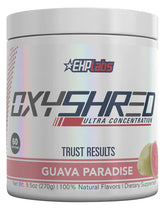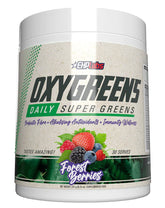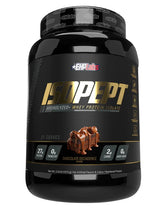Progressive Overload: The Real Secret Behind Muscle Growth
You’ve probably heard the phrase “progressive overload” thrown around in the gym or on fitness reels - but what does it actually mean, and why is it the key to gaining real, lasting muscle?
Let’s break it down without the jargon, because understanding this concept can completely change how you train.
What Is Progressive Overload?
At its core, progressive overload means consistently challenging your muscles to do more over time.
Your body adapts to stress - that’s how we grow stronger. But if the stress (in this case, your workout) stays the same, your body has no reason to keep adapting.
That’s why you can’t keep lifting the same weight for the same reps and expect your physique to change.
In simple terms: If you want to build muscle, you must gradually lift heavier, move more volume, or improve your performance in some measurable way over time.
The Science of Muscle Growth
When you train - especially with resistance - you create tiny micro-tears in your muscle fibres. Your body repairs these fibres stronger and thicker than before. This process is called muscle hypertrophy.
There are two main types of hypertrophy:
- Myofibrillar hypertrophy: Increases muscle fiber density (strength gains).
- Sarcoplasmic hypertrophy: Increases muscle cell volume (the “pump” look).
The best training programs blend both types - building a physique that’s not just big, but powerful and athletic too.
The 5 Pillars of Progressive Overload
There’s more than one way to push your limits. Here are the five most effective methods:
1. Increase the Weight
The most obvious - and most popular way.
If you’re benching 60kg for 8 reps this week, try 62.5kg next week for the same reps. Even small jumps over time lead to huge changes in strength and size.
2. Add More Reps
If you can’t add weight yet, add reps.
Example: If you can lift 40kg for 8 reps, aim for 9 or 10 next time. Once you can hit 10–12 reps comfortably, increase the load slightly and start the cycle again.
3. Add More Sets
Volume (total work done) plays a major role in hypertrophy.
If you’re doing 3 sets per exercise, moving to 4 can provide an extra growth stimulus. Just don’t overdo it - recovery still matters.
4. Improve Your Form and Range of Motion
Half reps equal half results.
Controlling your movement, maintaining tension, and increasing your range of motion can overload muscles in a smarter way - even without heavier weights.
5. Reduce Rest Time or Increase Tempo
Shorter rest = higher intensity.
Slowing down your tempo (like controlling the negative phase of a rep) also increases time under tension, which is a powerful hypertrophy trigger.
How to Apply Progressive Overload Without Burning Out
Here’s the tricky part - overload must be gradual.
If you jump from 50kg to 70kg overnight, you’re not overloading, you’re just risking injury.
Think 1-3% improvements per week.
That might not sound like much, but over a few months, it’s massive.
A great way to stay consistent is by tracking your workouts - either on paper, an app, or even in your phone notes. It’s hard to progressively overload what you don’t measure.
The Role of Nutrition in Muscle Growth
Training without proper nutrition is like trying to drive with no fuel.
Here’s what you need to support progressive overload and muscle growth:
-
Protein: Aim for 1.6 - 2.2g per kg of bodyweight daily.
This fuels muscle repair and growth. High-quality protein supplements like Rule One Whey Isolate can help you hit your target easily and efficiently. -
Calories: You can’t build muscle in a deficit.
A small caloric surplus (around +200–300 kcal/day) is ideal for lean gains. - Carbs: Your body’s main energy source. They power your training sessions and help with recovery.
- Hydration: Muscles are around 75% water. Dehydration affects strength and endurance - drink up!
And don’t underestimate sleep - most of your recovery and growth happens when you’re catching those zzz's.
How Fast Will You See Results?
Muscle building isn’t a 6-week project - it’s a long-term investment.
Most people can expect to gain:
- Beginners: 1-1.5kg of muscle per month (first 6-12 months)
- Intermediate lifters: 0.25-0.75kg per month
- Advanced: 0.1-0.25kg per month
The key is consistency. Progressive overload only works if you show up, week after week, and keep building on what you’ve done.
Common Mistakes That Kill Progress
Let’s be honest - most plateaus happen because of these avoidable errors:
- Doing too much too soon: Adding 10kg every session isn’t sustainable.
- Neglecting recovery: Muscles grow outside the gym.
- Ego lifting: Lifting heavy with bad form leads to injury, not gains.
- Inconsistent nutrition: You can’t out-train a poor diet.
- Skipping deloads: Every 6-8 weeks, take a lighter week to let your body reset.
Putting It All Together
Progressive overload is the foundation of every great physique and strength achievement - from weekend warriors to elite athletes.
But remember: it’s not just about pushing harder; it’s about pushing smarter.
Track your lifts, eat like you mean it, rest when needed, and play the long game.
If you can make small, consistent improvements each week, the results will come - and they’ll last.
Editor’s Picks
OxyWhey by EHP Labs
- $68.90
$89.90- $68.90
- Unit price
- / per
Gold Standard 100% Whey by Optimum Nutrition
- From $71.90
$85.90- From $71.90
- Unit price
- / per
OxyShred by EHP Labs
- $61.90
$79.90- $61.90
- Unit price
- / per
OxyGreens by EHP Labs
- $46.90
$57.90- $46.90
- Unit price
- / per
IsoPept by EHP Labs
- $74.90
$99.90- $74.90
- Unit price
- / per















